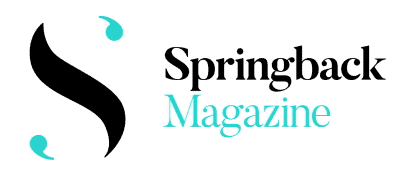For more than forty years now, the LGBTQIA+ community in Bologna, united under the auspices of Cassero LGBTQIA+ Center, strives to offer a safe space for people identifying as lesbian, gay, bisexual, transgender, queer, questioning, intersex, asexual and more, and to educate about gender identities and sexualities. As part of its outreach activities, Cassero produces Gender Bender (26/10–9/11/2024), an interdisciplinary festival directed by the outgoing Daniele Del Pozzo and Mauro Meneghelli, dedicated to contemporary works by LGBTQIA+ artists and not only that reflect the multi-layered present. In their own words, Gender Bender urges us ‘to consider time devoted to relationships as a factor of wealth instead of an unproductive waste’ and to position gender as central to understanding artistic work – without necessarily this work addressing the specific interests of the LGBTQIA+ community. In this way, the festival manages to amplify its own audience while counteracting heteronormativity.

review
‘For a New Beauty’: Gender Bender festival 2024



The black and white cover image of the programme for this latest 22nd edition combines photos from dance and sculpture, already suggesting interdisciplinarity, but going further than that. The photo collage places Martha Graham in Lamentation and the hellenistic statue of Laocoon and His Sons in a relation of continuity instead of a dichotomy. Graham’s sculptural dance expresses grief, while the dynamic sculpture of Laocoon immortalises him and his sons in the moment of their death – together composing a compound body of the female and the male, grief and death, the real and the mythic, the abstract and the tangible, the concealed and the revealed, the historic and the modern, co-existing symbiotically as extensions of each other. Such dualities, especially the temporal one, are also evident in works of this latest edition, for example Shortcuts to Familiar Places by Australian choreographer James Batchelor, who explores the origins of contemporary dance in Australia.
Batchelor investigates the origins of the technique in which he was trained by looking at the migration of expressionist dance (Ausdruckstanz) in Australia through a linear transmission from elder to younger, and teacher to student. On screen, three generations of female choreographers associated with Gertrud Bodenwieser, a Jewish dancer from Vienna who migrated to Australia before WWII, explain and transmit the fundamentals of Bodenwieser’s philosophy through gestures, movements and words. Batchelor’s mentor Ruth Osborne speaks about the importance of ‘bringing back the feeling of memory’ rather than striving to reproduce the precise shape of a movement; the late Eileen Kramer, at age 106, counts a phrase from Bodenwieser’s choreography that dates back to 1925; and Batchelor learns a part of Bodenwieser’s repertory from dancer and choreographer Carol Brown. Between each video, Batchelor revisits the past by embodying the plasticity of gestures in a solo, and by composing a male-female duet of complementary and symmetric pauses in a study of flow and weight that culminates in a dynamic and lively choreography in space. Playing an electric guitar with what seems to be a violin bow, the live musician reproduces the modern-dance relationship in which choreography follows music.

There is a spiral paradox in this transmission that is reinscribed in the present: Bodenwieser, the Viennese expressionist female dancer migrating to Australia to escape Nazism, and Batchelor, an Australian male dancer moving to Europe to find the origins of his movement tradition, his ‘dance mother’. In the process of tracing the last living testimonies of Bodenwieser, the bodies-as-archives that he encounters are women. What kind of ruptures or even possibilities unfold in the transmission of a light and ethereal movement quality from a female to a male body? Batchelor draws a line of heritage connecting past and present, mediated and live performance, memory and transmission, evidence and invention in a tender modern dance manner that on one hand seems to chase the past, and on the other illuminates not only the history of Australian modern dance but also of expressionist dance in Europe.
Also connecting with the past, Moritz Ostruschnjak’s Terminal Beach is a playground for crossing eras and styles from the gothic to the street and everything in between. Dressed in colourful sports tops and torn jeans, six dancers perform their idiosyncratic solos one by one before starting to move casually together in a step-based choreography with a street dance attitude. They undulate their bellies to the sound of cowboy music and perform movements inspired by figure skating – despite wearing rollerblades on only one foot. They drape flags bearing different symbols – the word ‘breath’, the logo of Goodyear, and others – as if to make a gentle revolution or to become contemporary knights of an unspecified era. A silent scream sometimes shapes their mouths as if they were lip-synching the singing voices. Terminal Beach is a sequence of different choreographies; sometimes even the lights turn off, to prompt a different mood once turned on again, followed by unexpected sound choices: blues, an operatic aria, medieval music, a song by Johnny Cash. A collage of steps, moods, symbols and objects, set into an eclectic sound environment that intersects geographical borders and historical eras, Terminal Beach suggests that there is nothing new to be invented, only the juxtaposition of the already seen and heard that takes unexpected paths until these evaporate in a Newton-like spinning wheel into the abyss of the darkness.

In The Garden, emergent choreographer Gaetano Palermo explores how a sound dramaturgy may offer multiple interpretations to immobility. A blonde woman with curly hair and a short red dress (Sara Bertolucci) lies prone on the stage of the small and atmospheric theatre of Teatro Comunale di San Giovanni in Persiceto, outside Bologna. What happened to this woman and why does she remain still throughout the performance? Is she dreaming? Has she been murdered? Palermo constructs a soundscape composed of cicadas, Alfred Hitchcock’s voice announcing his ‘music to be murdered by’, a joyful march, a football match and much more, taking each single audience member, who sits alone in each box seat of the theatre, into an emotional journey. Palermo creates a living sculpture within the durational limits of a dance performance, sculpting performance time through sound and composing an aural garden as a meditative experience.

Another non-conventional format was Corpo a corpo, a durational solo by Claudia Caldarano set in the brick-walled underground space of Palazzo Bentivoglio, that the artificial smoke makes look like a Turkish bath. Its durational character inevitably offers fragmented views and interpretations of a body, immersed in a liquid soundscape, that manifests its fragility and vulnerability through its introspective nakedness. Caldarano moves horizontally on top of a slippery black platform, she hides behind it revealing fragments of her body, which she obsessively tries to clean while looking desperately for another body to give relief to some emotional and corporeal trauma. In contrast, Marga Alfeirão’s Lounge at Atelier Sì is an erotic duet between two women. In a relaxed state, they behave with mutual tenderness during an intimate and sensual tête-à-tête of desire and sensual provocation under the tones of African-inspired rhythms. Yet, in this sort of lap dance of lesbian sexuality, erotic attraction is so explicitly portrayed that it risks turning the bodily writing from choreo-graphic to porno-graphic.
During this second weekend at Gender Bender, dance included works that may have been seen in other international festivals, but the specific context placed gender as a way of looking. The festival also featured works more tightly connected with the issues and desires of the LGBTQIA+ community, especially those performing lesbian identity. In this way, perhaps one of the biggest successes of Gender Bender is how it welcomes and combines a general with a specific audience, promoting mutual integration and inclusivity while advocating for the bodies that are in quest of a ‘new beauty’. ●





